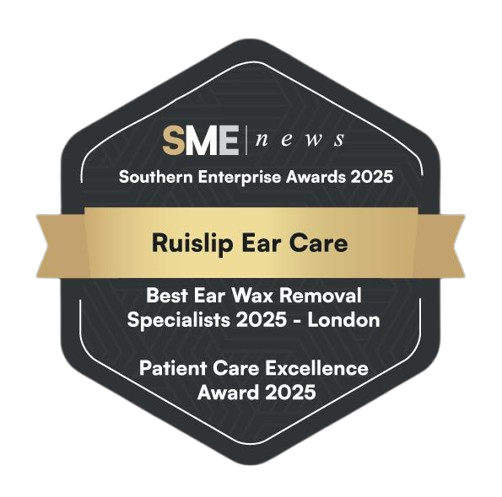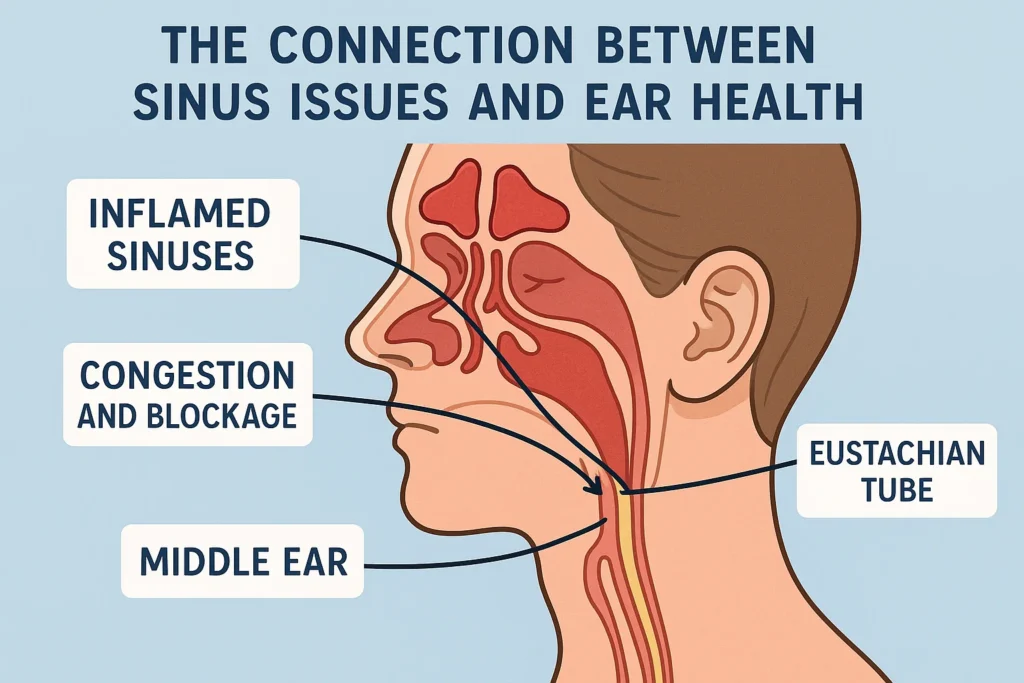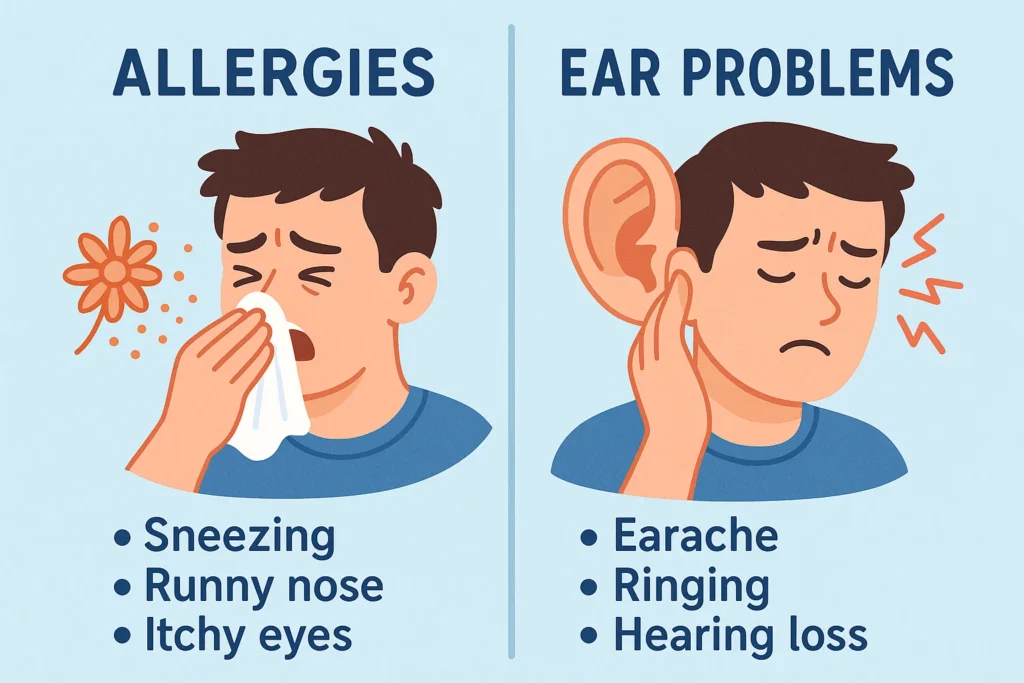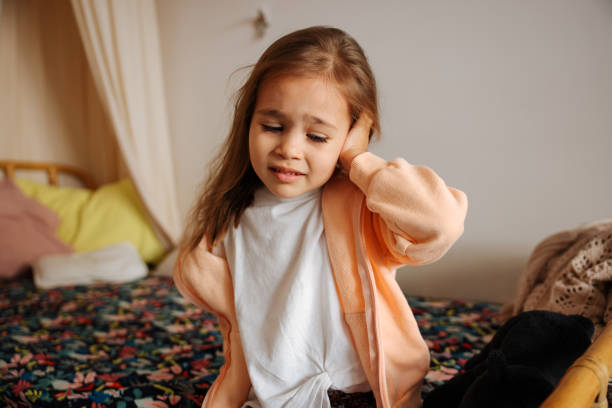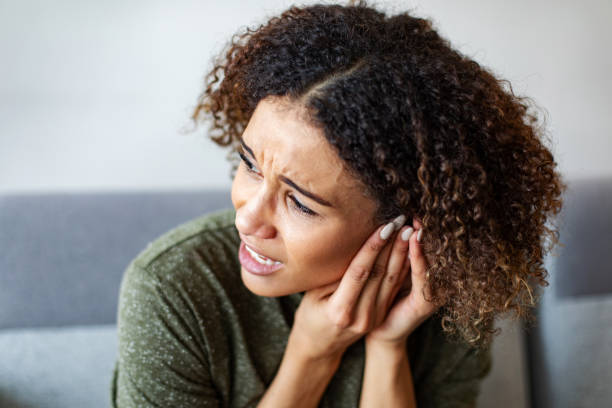The Connection Between Sinus Issues and Ear Health
The Connection Between Sinus Issues and Ear Health Sinus problems are more than just a runny nose or facial pressure—they can have a significant impact on your ears. Because the sinuses and ears are closely connected via the Eustachian tubes, issues in one area can lead to discomfort, fluid buildup, or even infections in the other. Understanding the link between sinus issues and ear health is essential for preventing complications and maintaining overall ear wellness. How Sinuses Affect Your Ears The Eustachian tube connects the middle ear to the back of the throat and helps regulate air pressure and drain fluid. When sinuses are inflamed due to allergies, colds, or sinus infections (sinusitis), this tube can become blocked. Consequences of blockage include: Pressure and fullness in the ear Fluid accumulation behind the eardrum Temporary hearing loss Increased risk of middle ear infections Read more at Mayo Clinic: Sinusitis Common Ear Problems Caused by Sinus Issues 1. Ear Pressure and Fullness Sinus congestion can cause a sensation of fullness or pressure in the ears. This often worsens during flights, driving in mountainous areas, or sudden altitude changes. 2. Fluid in the Middle Ear Blocked Eustachian tubes can trap fluid behind the eardrum, leading to serous otitis media. Symptoms include muffled hearing and discomfort. NHS: Glue ear and middle ear fluid 3. Recurrent Ear Infections Persistent sinus issues may lead to repeated middle ear infections (otitis media) as fluid builds up and bacteria or viruses take hold. 4. Tinnitus (Ringing in the Ears) Inflammation from sinus congestion can sometimes contribute to tinnitus, causing ringing or buzzing sounds. Symptoms Linking Sinus Issues to Ear Problems Watch for these signs if you have sinus problems: Ear fullness or pressure Ear pain without obvious infection Temporary hearing loss Ringing or buzzing in the ear Popping or clicking sounds Fluid discharge from the ear WebMD: Sinus problems affecting the ears How to Protect Your Ear Health During Sinus Issues 1. Manage Sinus Congestion Use saline nasal sprays to clear mucus Take prescribed decongestants for short-term relief Address underlying allergies to reduce inflammation 2. Avoid Cotton Buds or Inserting Objects in the Ear Poking or cleaning your ears with cotton buds can worsen pressure or cause injury, especially when the Eustachian tubes are blocked. 3. Stay Hydrated and Maintain Humidity Drinking water and using a humidifier can help thin mucus and improve sinus drainage, reducing ear pressure. 4. Consider Professional Ear Care If fluid or wax buildup occurs due to sinus issues, professional earwax removal or microsuction can relieve pressure and protect hearing. When to See a Doctor Seek medical attention if you experience: Severe or persistent ear pain Hearing loss or muffled hearing Fluid or pus from the ear Frequent sinus infections with ear complications Dizziness or balance problems Early intervention can prevent chronic problems and maintain both sinus and ear health. Treatment Options Sinus medications: Decongestants, antihistamines, and corticosteroid sprays Professional ear care: Microsuction and earwax removal for fluid or wax-related blockages Surgical options: In severe cases, procedures such as ear tubes may be recommended for repeated infections Final Thoughts Sinus issues and ear health are closely connected. Ignoring sinus congestion can lead to ear pressure, fluid buildup, infections, and even hearing problems. By managing sinus symptoms and seeking professional ear care when needed, you can protect your hearing and overall ear health. At Cleaner Ears, we provide expert ear care services, including microsuction and professional earwax removal. If sinus problems are affecting your ears, schedule an appointment today to maintain optimal ear health.
